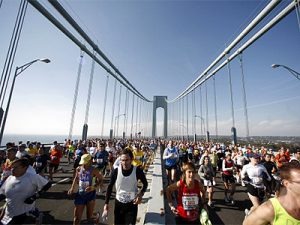
The vast majority of those who compete in a running event are trying to improve upon their personal best. This is true whether the race is a local 5k or a major marathon, has 0 or 5000 feet of altitude change, or the runner is 20 or 50 years old. The drive for faster, higher, farther
seems to accompany us forever.
In order to achieve a personal best, a person needs a well-planned and executed training schedule, and, above all else, the right race tactics. In our experience, at the various running events we’ve been to with running.COACH, a large number of runners have no idea how fast they can run. Their estimated and actual time are often very far apart.
In terms of racing and setting goals, the person who trains with running.COACH has several advantages. I would like to emphasize two of them:
- As a runner, I have confidence standing at the start line that the training schedule running.COACH has created for me has brought me to this race in the best shape I can be in.
- running.COACH calculates a realistic time goal for my performance, and thus I know what speed I have to run to achieve my best possible result. If I can start at and maintain that speed, I will reach my best possible result.
Once the race begins, there’s an excitement and a pull of ‘the crowd’, that causes most runners to go too fast right from the first strides of a race. You must try to keep your adrenaline under control, because your adrenaline will deceive you and make your pace feel easier than it actually is. Your metabolism can not be tricked though – it works very reliably and logically. Going too fast (relative to what you’ve trained for) in the first half of a race will certainly cause
you to slow down over the second half and this is not an efficient or effective way to race. The best racers run their best races when they ‘negative split’, or run the second half of the race faster than the first. There’s an art to this type of racing that must be learned.
Here’s a few tips:
- Control your speed right from the first strides of a race.
- Start with the goal of running the second half faster than the first.
- Practice this ‘negative splitting’ during your training: run the second half of every workout faster than the first.
Examples:
- Endurance run 60 minutes. Run an out and back route and turn after 31 minutes. Try to return to the same point you started from after 60 minutes.
- Interval run – 4 x 5 minutes. Within each of the four repetitions try to run the second 2.5 minutes faster than the first 2.5 minutes, and intervals 3 and 4 faster than intervals 1 and 2.
Run with a running.COACH schedule and negative split all of your runs – you’ll get faster!
